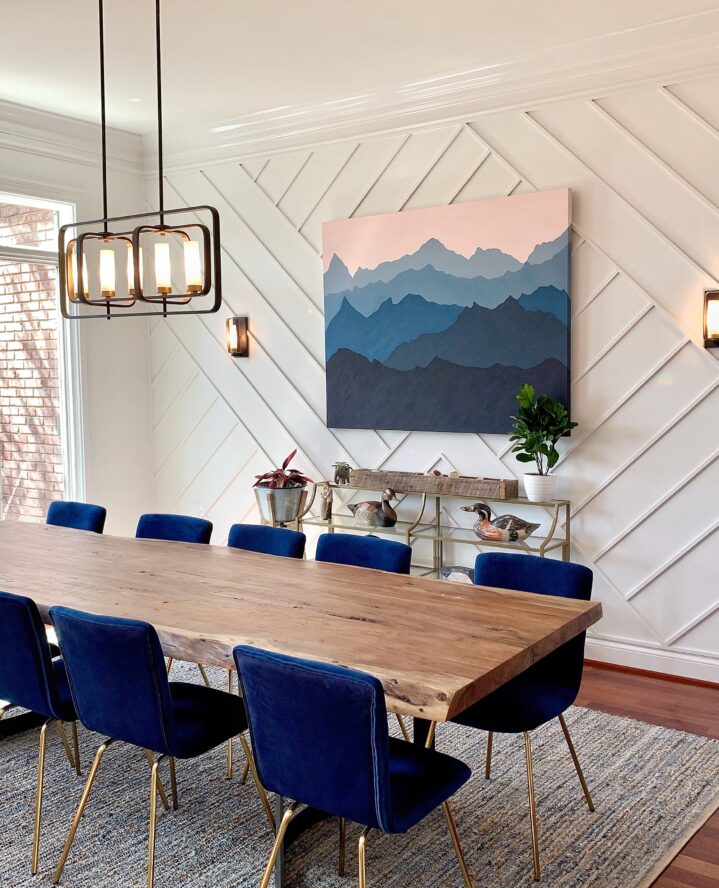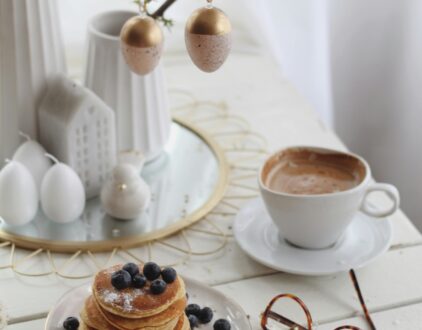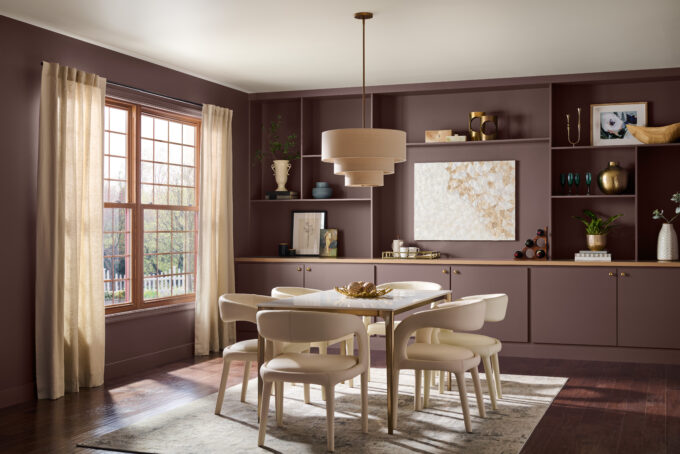When it comes to decorating your dining room, an accent wall adds something a little special — it’s like a flair of personality in your space. It also creates a focal point, enhances the ambiance, and brings a sense of style and sophistication to your dining area. While it may seem like a simple task, there’s more to it than just picking a color. Transform your dining room with these tips on how to create a dining room accent wall.
Choose the Right Wall
The most obvious first step in creating a dining room accent wall is to determine which wall will work best as the focal point. Survey the layout of your dining area and pick a wall that stands out or has architectural features worth highlighting. If you’re having trouble deciding, the wall behind the dining table or the one facing the entrance is typically a solid go-to choice.
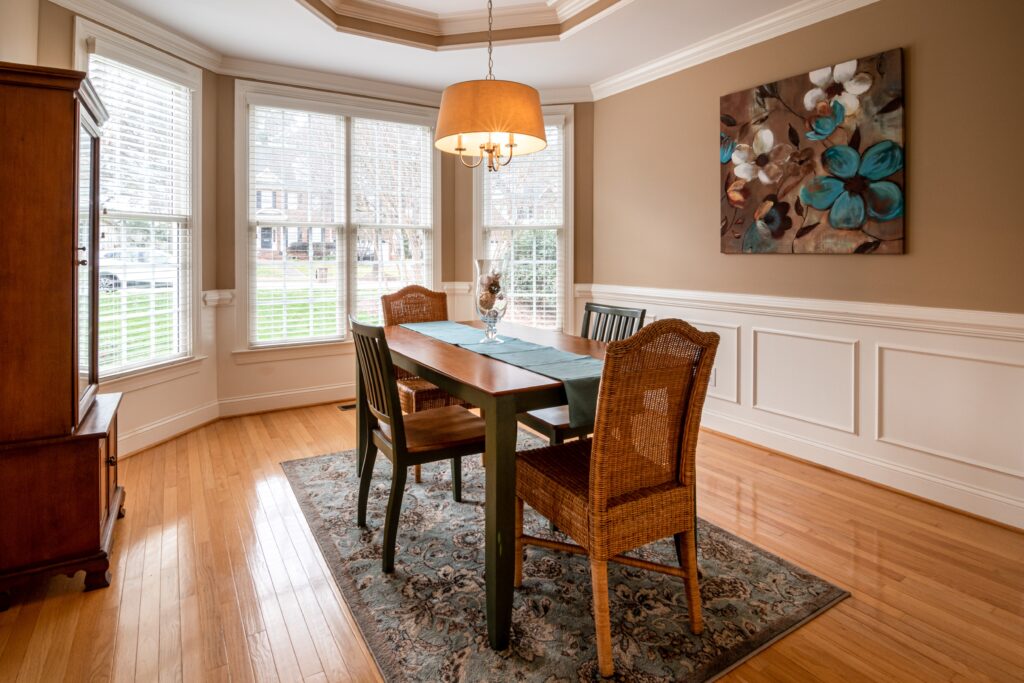
Select an Accent Wall Color
Once you’ve chosen the wall, it’s time to select a color that will make it stand out. This step is probably the most crucial, and while choosing your color could be based on your personal preference and aesthetics, you might want to think about the science behind it.
In fact, color plays a significant role in our perception, emotions, and even appetite, and understanding the impact of different colors can help you make an informed decision that enhances the overall dining experience.
- Red is a bold and intense color that can stimulate appetite and evoke passion. It has been associated with increased heart rate and blood pressure. Red is often used in dining rooms to create a vibrant and energetic atmosphere, encouraging lively conversations and a sense of excitement.
- Blue is known for its calming and soothing properties. It has a tranquil effect on your mind and can promote relaxation.
- Green is often associated with nature, freshness, and harmony. It has a calming effect and can create a sense of balance in a dining room. Green accent walls can provide a refreshing and serene backdrop, making the space feel inviting and rejuvenating.
- Yellow is a warm and cheerful color that can evoke feelings of happiness and optimism. It is typically associated with energy and stimulates the mind. A yellow accent wall can create a vibrant and uplifting atmosphere in your dining room, promoting a positive dining experience.
- Neutral tones such as beige, gray, or taupe are versatile choices for accent walls. They provide a subtle and sophisticated backdrop that allows other elements in the room, such as furniture or artwork, to take center stage. Neutral colors are also known for their calming effect, making them suitable for creating a serene dining environment.
Prep the Wall Surface
Now the fun begins! Before applying any paint or wallpaper, prepare the wall surface properly. Remove any existing wallpaper or flaking paint and repair any cracks or imperfections. Sand the wall lightly to create a smooth surface and create an adhesion of the new material.
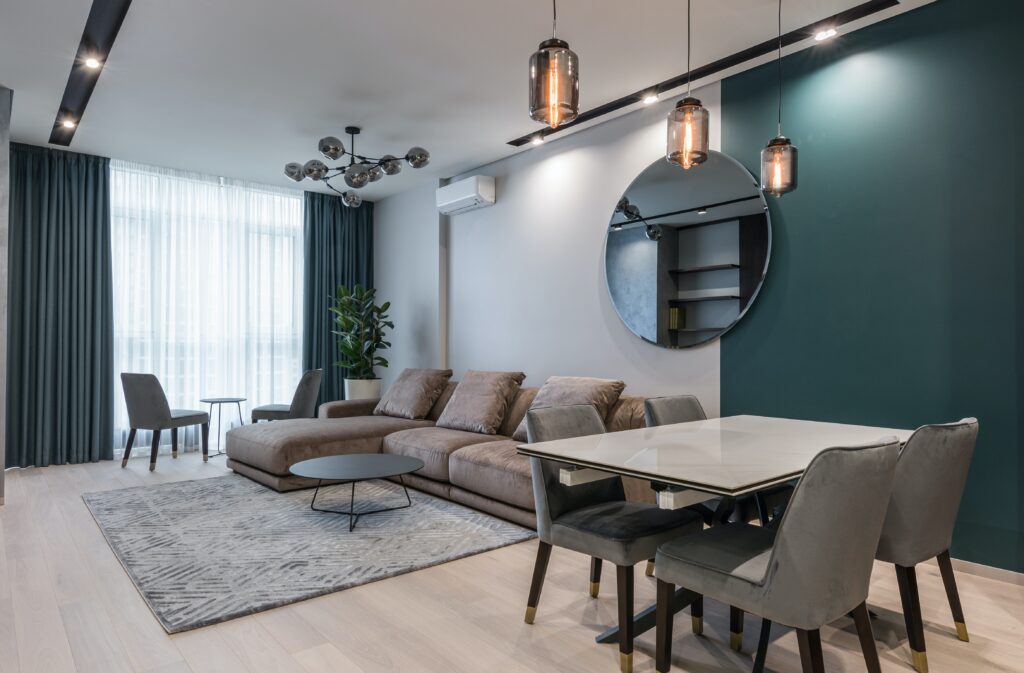
Apply Paint or Wallpaper
Apply a coat of primer to the wall before painting to ensure better coverage and durability. When using wallpaper, carefully follow the manufacturer’s instructions for application and pattern alignment.
Create a Stencil Design
If you’re feeling extra crafty, you could create a stencil design for an even more customized look. Stencils offer endless possibilities, allowing you to add intricate patterns, motifs, or even typography to the wall. Use painter’s tape to secure the stencil in place and apply the paint or a contrasting color with a stencil brush.
Add Textures or Patterns
Incorporating textures or patterns on your accent wall can elevate the visual interest of the space. Techniques such as color washing, sponging, or ragging can create unique textures. Alternatively, you can also use wallpaper with textured finishes or opt for faux finishes like marble or brick for a more rustic or industrial look.
Use Wood Paneling
Wood paneling is a classic choice for creating an accent wall in a dining room. It adds warmth, texture, and a polished look to your space. Choose from a wide range of wood finishes and paneling styles, such as shiplap, beadboard, or tongue and groove, to achieve your desired look.
Add Stone or Brick Veneer

For a more dramatic and textured accent wall, consider using stone or brick veneer. These materials can give your dining room a rustic or industrial aesthetic. Apply the veneer using an adhesive suitable for the specific material and grout the gaps for a more authentic look.
Make the Final Touches With Decor and Lighting
Once your paint dries or your wall is complete, enhance it by strategically placing artwork or large mirrors. Large paintings, framed photographs, or a collection of smaller pieces can add visual interest and a personal touch to the dining room. Mirrors, especially when positioned to reflect natural light, can create an illusion of a larger space.
Proper lighting can further highlight the beauty of your dining room accent wall. You could add sconces, wall-mounted light fixtures, or pendant lights to provide focused illumination on the wall. Experiment with different lighting styles to create the desired ambiance, whether it’s soft and intimate or bright and energetic, and you’ve created the perfect dining room accent wall for your home.
popular posts
Decorate
Access design inspiration that infuses personality and culture into your spaces.

These Are The Items We're Eyeing From CB2's Spring Collection
by Kelsey Marie | April 25, 2023
Spaces
Whether it’s luxury or ease, every area of your home should be as fabulous and unique as you.
Need a Refresh? The Top Fall Paint Colors to Try This Season
by Stixx Matthews | August 29, 2025
Home Office Ideas So Chic, You’ll Ditch the Zoom Blur
by Stixx Matthews | February 20, 2025
This Fashion Influencer’s Home Bar Is a Masterclass in Chic Design
by Stixx Matthews | February 19, 2025
FOLLOW ALONG ON INSTAGRAM
#homeandtexture
Find us on social for more home inspiration where culture, personal style, and sophisticated shopping intersect to help you create a home where you love to live.
